
1. Screen degreasing
All the screen, whether it is new or used stencil should be degreased. This is to produce high-quality halftone indispensable step. In addition to the synthetic mesh, it must also play rough, to enhance the network version of the resistance to mechanical abrasion.
2. The photosensitive paste sensitized
Direct sensitive adhesive is usually equipped with a diazo sensitizer or sensitizers behalf of pulp. That is, before using a photosensitive paste, evenly mixed sensitizer to photosensitive paste in order to activate sensitized photosensitive paste.
3. Coating
The so-called squeegee is to use photosensitive paste layer sealed to the screen, but also the thread tightly sealed. Squeegee should be done in a slow, strong and uniform. Factors affecting the network version of the production effects are: screen mesh count, thread diameter, screen colors, screen tension and clean is clean, the thickness of the photosensitive paste curing degree and temperature, sizing knife, and scrape the pulp angle, speed and so on.
Squeegee There are three ways:
1) First printing surface layer of screen scraping, and then in the network version of the plastic surface scratch on the floor. Final drying. From the printing results, the photosensitive layer on the thin scraping, screen thickness small halftone ink storage capacity will be less.
2) In the first screen printing surface scratch or two, and then squeegee the surface scratch 1-5 down, every scratch it, turn 180 degrees Mobility version, then flat, dry, print side down. Such produce halftone and ink slightly larger reserves.
3) On the basis of the second method, that is, after drying, then a layer, and then dried in the Web version of the printed surface scratch, so produced halftone thicker, larger reserves ink, the printing pattern trimming tension high.
4. Drying
In order to improve the clarity of pattern and paste in the photosensitive ensure uniform distribution of the screen surface, the drying process should ensure that no dust pollution around, and should be operated in a dark room or yellow light. When placed in the frame, print side down, to keep the screen horizontally. Although in the case of a dust-free drying fan is available, but in order to speed up the drying speed, drying box can be used (Note: The maximum temperature should not exceed 40 ℃).
Since the wet surface will affect photosensitive paste sensitive to light, it must be done thoroughly dried scratch coating layer before exposure. Without completely dry conditions, there will be underexposed.
Drying Instructions:
When using a third method of scratching, each painted a must do on a fully dried coating, otherwise moisture will sandwiched between the photosensitive layer.
If possible, keep the indoor temperature constant. If the indoor humidity, to extend the exposure time, especially in the summer, if not lower humidity means, should pay special attention to this point. In fact, the cost of installation means lower humidity is not too high.
Often using the dryer (maximum temperature of 40 ℃) in the industry, especially in the more humid environment. But you must know, since the heating network will block the expansion of chromatic inconvenience that it is difficult to achieve accurate color. Therefore, to ensure accurate color, all screen and screen frame to be dried in the same environment. And prior to exposure, they should be allowed to return to room temperature.
The operating environment, we should try the exposure, dry place with the screen frame production, cleaning the place apart, as in the production of wire mesh and wash areas more humid.
5. UV Exposure
Exposure operation belong to one of several important steps to master good or bad related to exposure pattern fineness, pattern edge sharpness and wear resistance pattern. In order to ensure good exposure effect, perform the following three steps: a rough calculation of the exposure time, the exposure test trials were distributed and were compared with a screen printed pattern and negatives.
Rough calculation of the exposure time
There are many factors that determine the length of time of exposure, according to the actual situation, calculate the printing method suited to their own environment and exposure time.
View basic exposure schedule, mainly to see the light source and the photosensitive paste scratch coating method used.
It lists the factors that influence the exposure (such as dyeing mesh, humidity, etc.) each factor has an impact factor (commonly known as "exposure factor"). For example, if you use multifilament polyester mesh, the exposure factor of 1.3-1.5.
The exposure time base multiplied by the exposure factor, draw a rough exposure time.
Exposure time base X = rough exposure time exposure factor
Screen preparation exposure guidelines:
Metal wire cloth and wire mesh shading dye is strong, therefore, the required exposure time is longer. Coarse mesh fine screen exposure time is longer than desired.
In order to ensure clarity of the halftone pattern and jagged teeth and bite phenomenon, let screen is in a good vacuum, in order to ensure full contact with the photosensitive layer backsheet, and should be remembered for the exposure time to stain the screen correspondingly longer.
Using tunable light source (finger position is adjustable), in order to ensure a uniform screen exposure and reduce tooth biting phenomenon, the best distance is 1.5 times the diagonal pattern of the sun or 1.5 degrees screen diagonal length.
Underexposed, often brings the halftone can not be reused or with trachoma and serrated. When rinsing, if the network version of the squeegee surface sticky and soft feel, indicating that the screen is underexposed, that there is not enough light reaches the squeegee side of the photosensitive layer so that the photosensitive layer can easily be washed away. Meanwhile, the lack of exposure, the photosensitive layer of the photosensitive layer even softer easily be washed away. So that the screen is not resistant to mechanical abrasion and solvent resistance is poor.
Sometimes, there are some underexposed stencil can be taken remedial measures. The methods are: Gently rinse off screen, the photosensitive layer of softer wash, wipe with a white paper and then drying the screen, the last exposure.
Note that you must let squeegee facing toward the light source.
How to choose Rubber Squeegee?
In the screen printing process, the squeegee by embossing mesh to the substrate surface, so that the transfer of the ink through the mesh to the product surface to achieve printing, and it is the source of the printing pressure.
-
Cross-sectional shape of the squeegee:
Rectangular cross-section:
Rectangular squeegee suitable for most occasions flat-screen printing, silk screen decoration paper, UV Spot coating, multi-color screen printing, overprint screen printing. Monochrome and multicolor overprint of plastic products.
Triangular cross-section
Triangular section squeegee suitable hollow plastic container, hard and soft circular, elliptical blow paper products, the smooth surface of the textile printing; partial glass PAPER silk screen cylinder metal products, glass, paper products, ordinary CD silk screen of the disc.
Wedge-shaped cross-section
The wedge-shaped cross-section for high precision outlets and extra-fine lines of fine print, low viscosity ink screen printing of fine lines, the fine dot silk screen of the mirror glass, ceramic fine after firing device, CD-ROM, silk screen outlets.
Spherical-section
Suitable for thick film coating, printing base, the fine tone prepress cover printing, UV Spot UV screen printing, rough surface screen printing, silk screen painting wood products, the sandblasting plastic products surface field printing, eye-catching LOGO prominent silk screen .
Squeegee is usually 65 degrees, 75 degrees, 85 degrees three.
65 degrees squeegee:
Suitable for large area thick layer of coating, screen printing, suitable flatness of glass, ceramics, wood products, screen printing, large iron products screen printing. Ink through a large amount of ink thickness. Some bending products such as satellite antenna, bottle screen printing;
75 degrees squeegee:
Suitable for paper, film, and all kinds of plastic products, monochrome, multicolor screen printing, textile screen printing, silk screen of most construction materials, large billboards screen printing
85 degrees squeegee
Demanding products suitable for precision circuit boards, thick film circuit, soft film circuit panel, high-precision dot silk screen, flat-screen high smooth flat products, antique oil painting products, LCD panels, screen printing of various types of functional slurry.
Mixed hardness
Has a solid supporting body with the printing process, the hardness can be varied. Screen printing machine suitable for high-speed screen printing machines, high-precision control, high-precision UV screen printing with offset printing of fine lines decoration.
Screen printing machine Knowleage
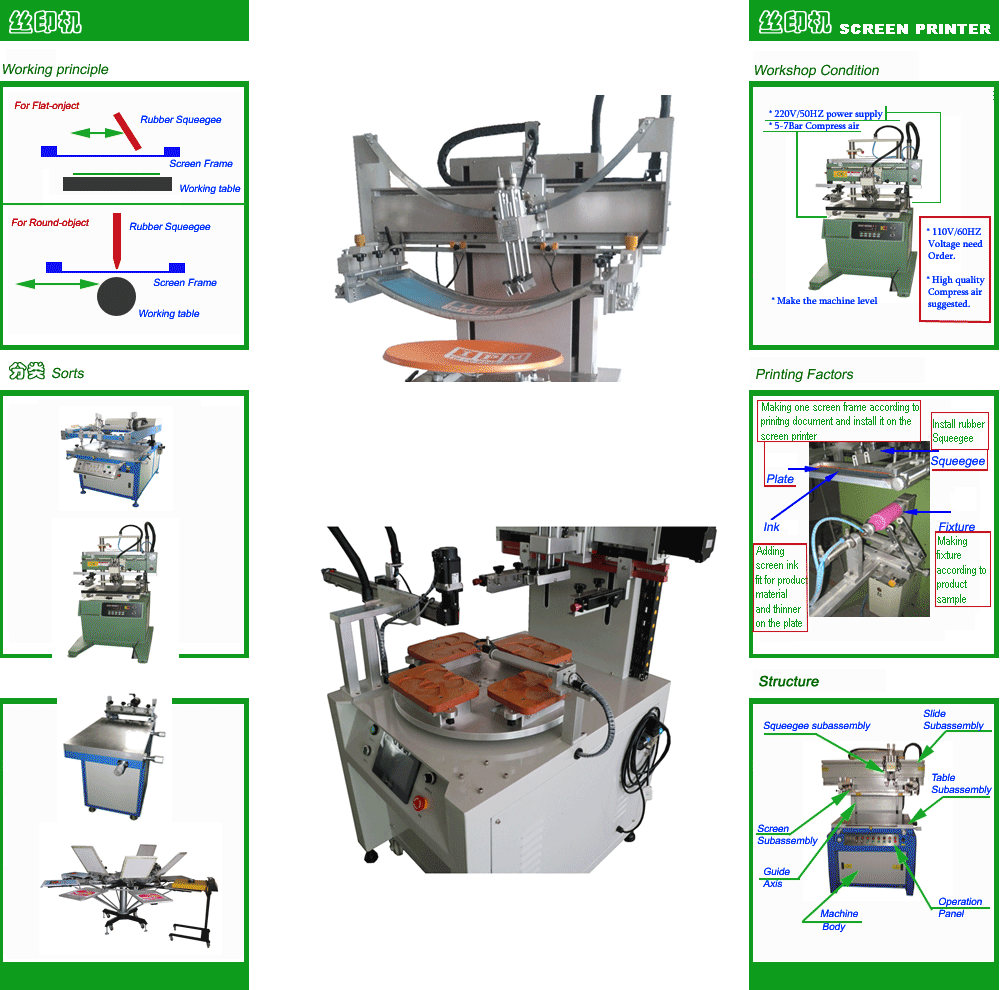
Screen printer
Used in printing flat, oval, and standard round products. It is consist of working table, screen frame combination, ink Squeegee system, operation controlling system and machine body.
l STRUCTURE
Screen printer has a more simple structure:
1) Working table: Install fixture and substrates. There are five kinds of working table: Flat, round, oval, T model, vacuum. T model working table and vacuum working table keep stillness when printing; other kinds of working table can move up and down when printing, In order to improve production efficency ,
conveyer working table installed on flat screen printer.this kind of screen printer is suitable printing small dimension objects.
2) Screen frame combination: Install screen plate and store ink.When printing flat products, frame keep stillness; when printing cylinder, screen frame move from left to right.
3) Squeegee nip combination: Install rubber squeegee and supply ink for coating on the surface of silk. Rubber blade move up-and-down, meantime ink floor move with opposition direction. When printing flat products, squeegee nip combination move left to right, when printing cylinder products, they keep stillness. Squeegee rubber finish printing and ink floor finish coating.
4) Operation controlling system : Most of screen printer controlled by micro-computer built in to make machine stability and easy to operate. When testing, only press simple action key and when starting automatic key to begin printing will be helpful to operate screen printer.
l MAINLY FACTOR
1) Screen plate:
Making screen plate through three kinds of way: emulsion, direct film, indirect film. Different substrates need different technology parameter such as: silk tension, count, thickness of emulsion. Water base and solvent base emulsion coated according to different products.
2) Screen ink:
Choosing solvent screen ink, UV ink and function plasma according to printing request. Ink must be test before printing.
3) Rubber squeegee:
Ink pressed to deposit onto the products by rubber squeegee. Rectangle squeegee is for flat substrate and triangle squeegee is for cylinder substrate. Harder squeegee get more precision printing result than softer squeegee.
4) Fixture:
It is important to make fixture according to products. Regular products need the fixture made by lathe or CNC. Complex products need the fixture made by polyester resin. Round products need same diameter transmission gear with product diameter.
l SORTS
2. One colour, two colours, screen printer to be sorted according to max printing colour numbers. One colour screen printer print one colour one time; two colours pad printer print two colours in one product one time. One colour screen printer is simpler, but multicolor screen printer has more complex structure and volume. widely use in printing cosmetic and other industry package.
3. to be sorted according to different working table installed. Round working table screen printer print round products; oval working table one print oval bottle; T model screen printer print rigid flat products and vacuum table screen printer print paper and soft film products.
4. Different feed transmission way sort screen printer as and web-roller screen printer. Most of screen printer is single-piece screen printer.
Samples of screen printing machine


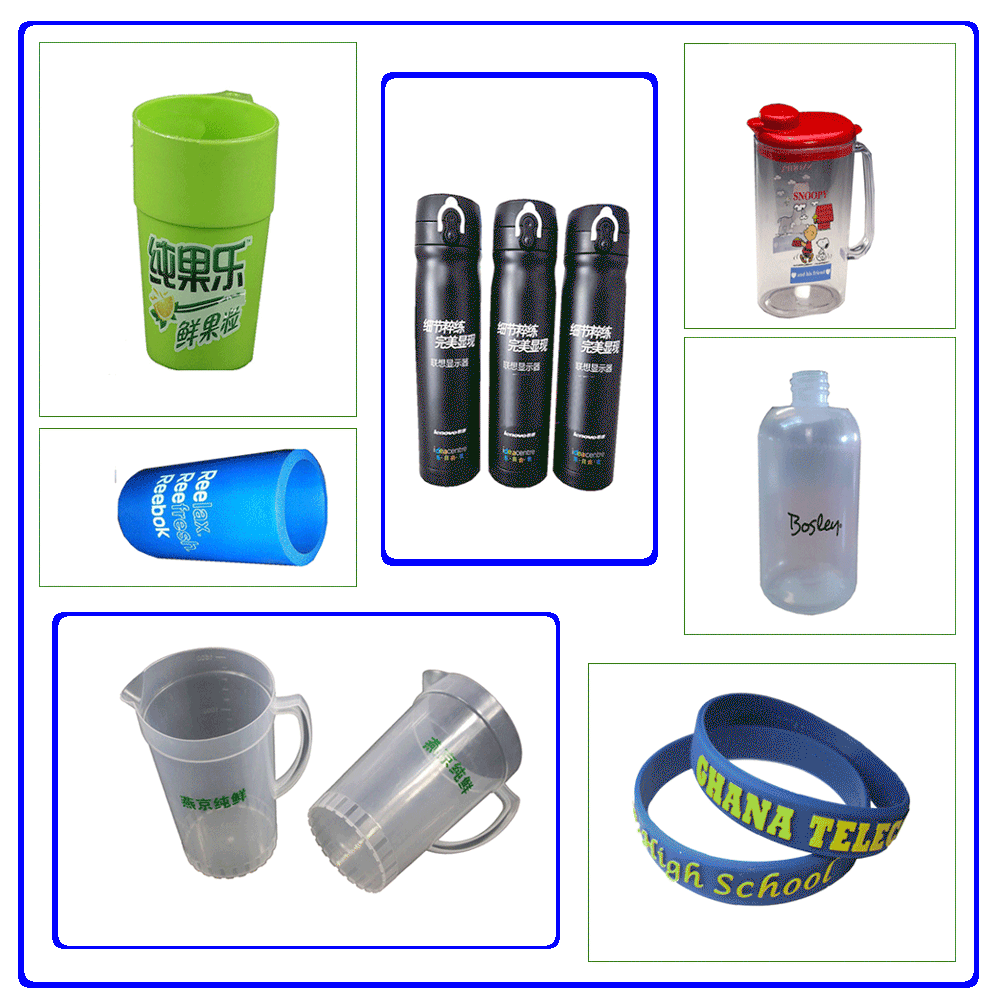

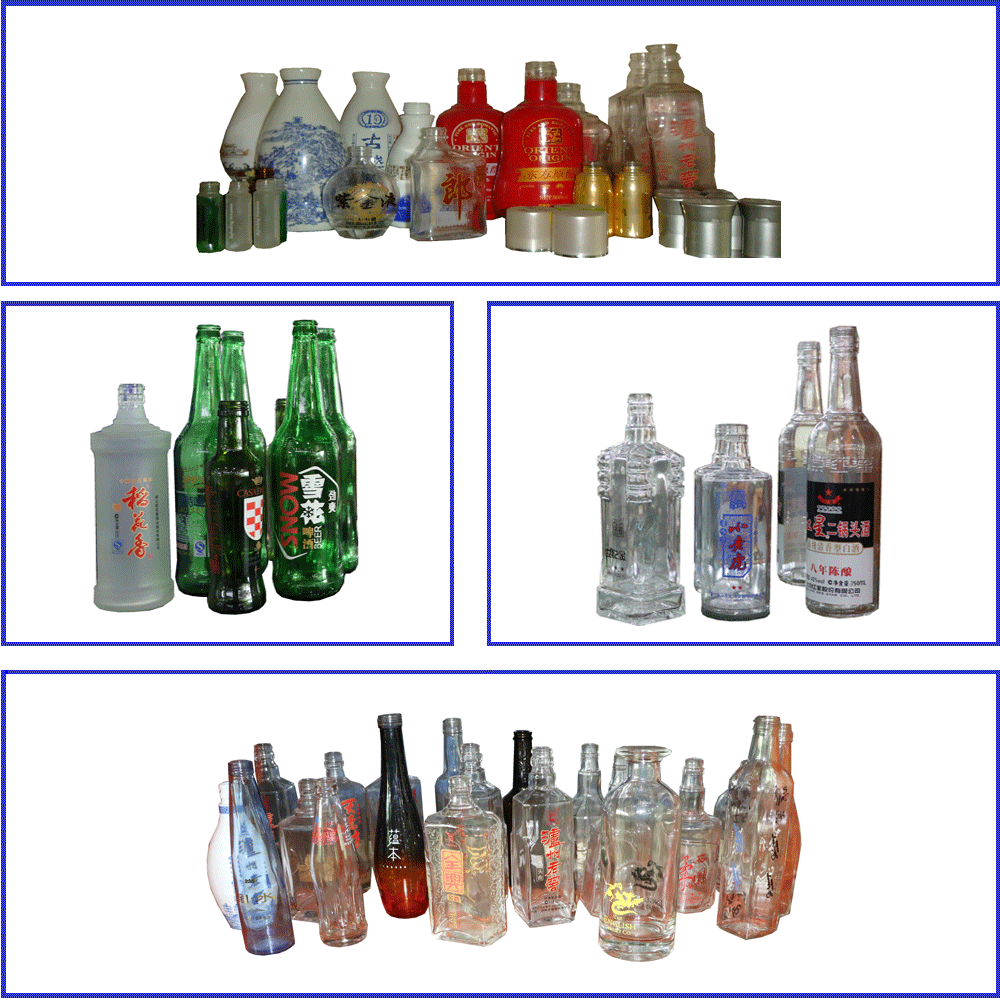

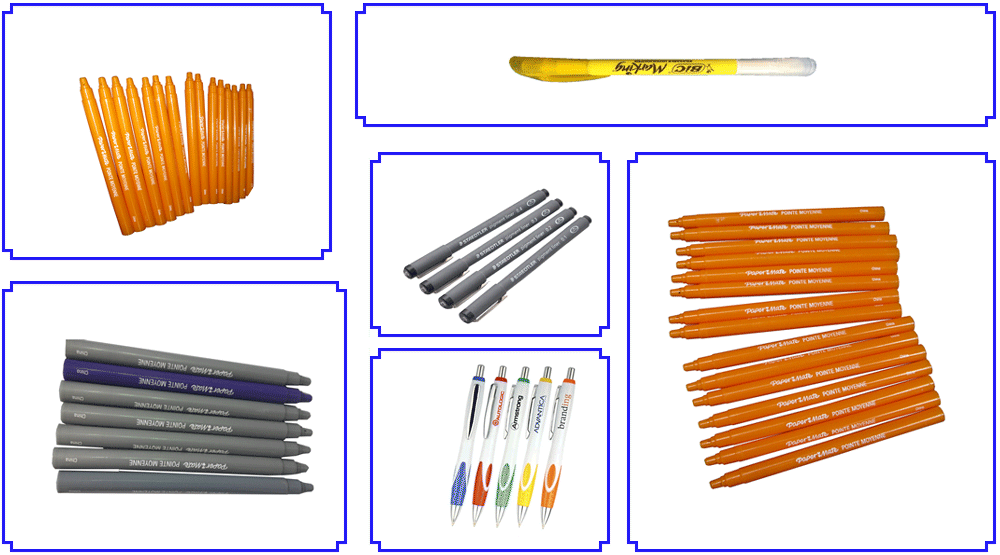
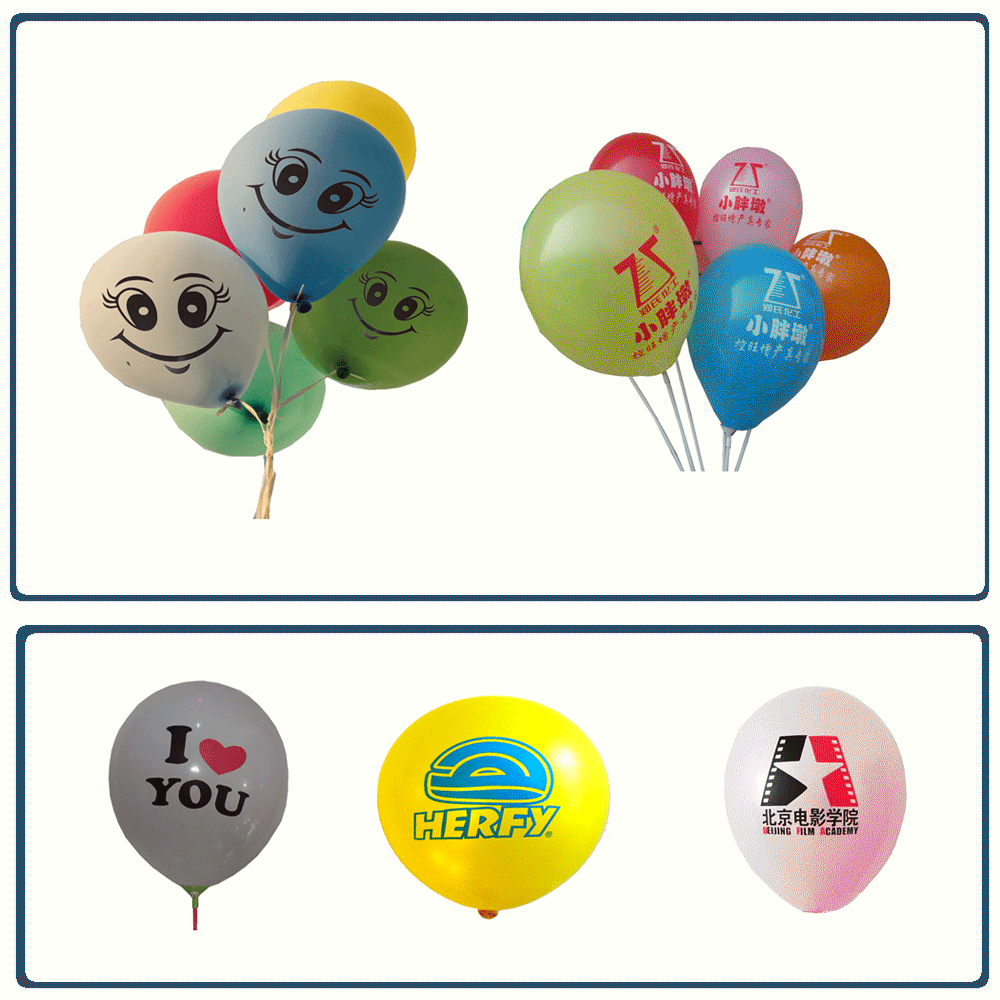
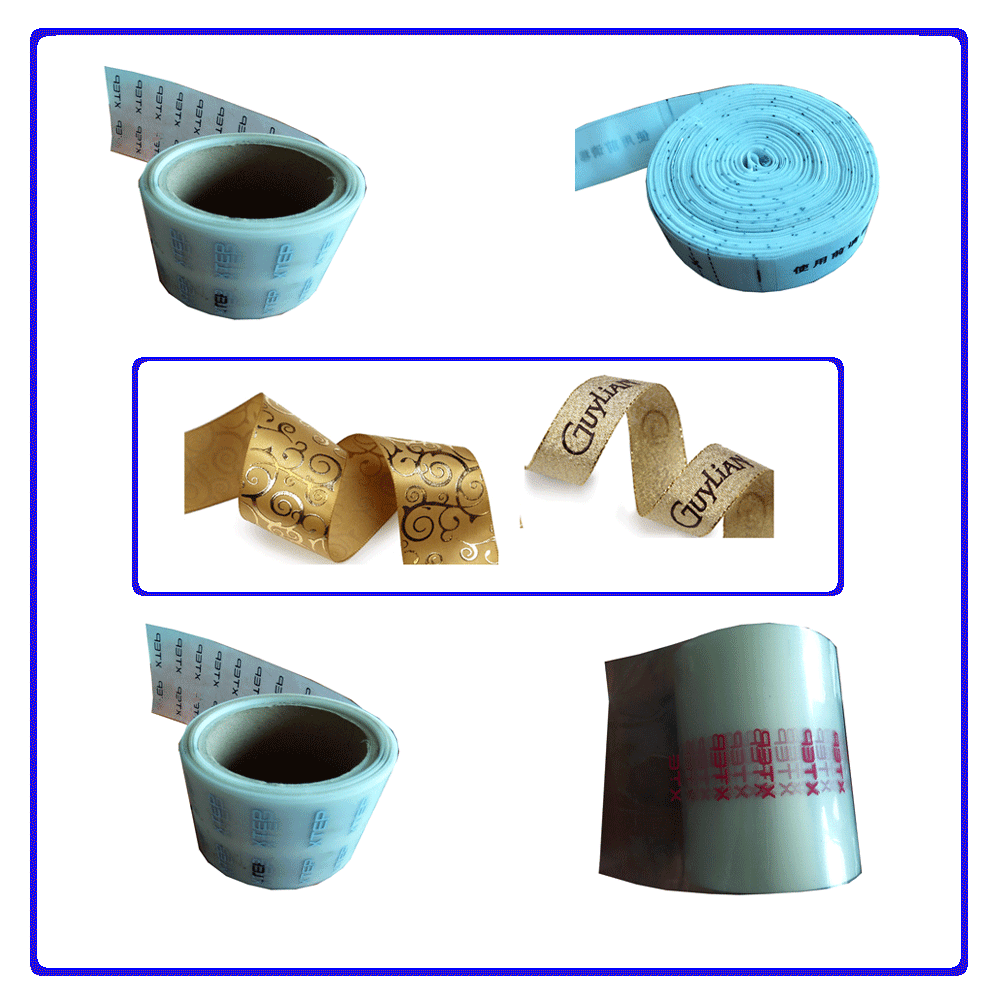
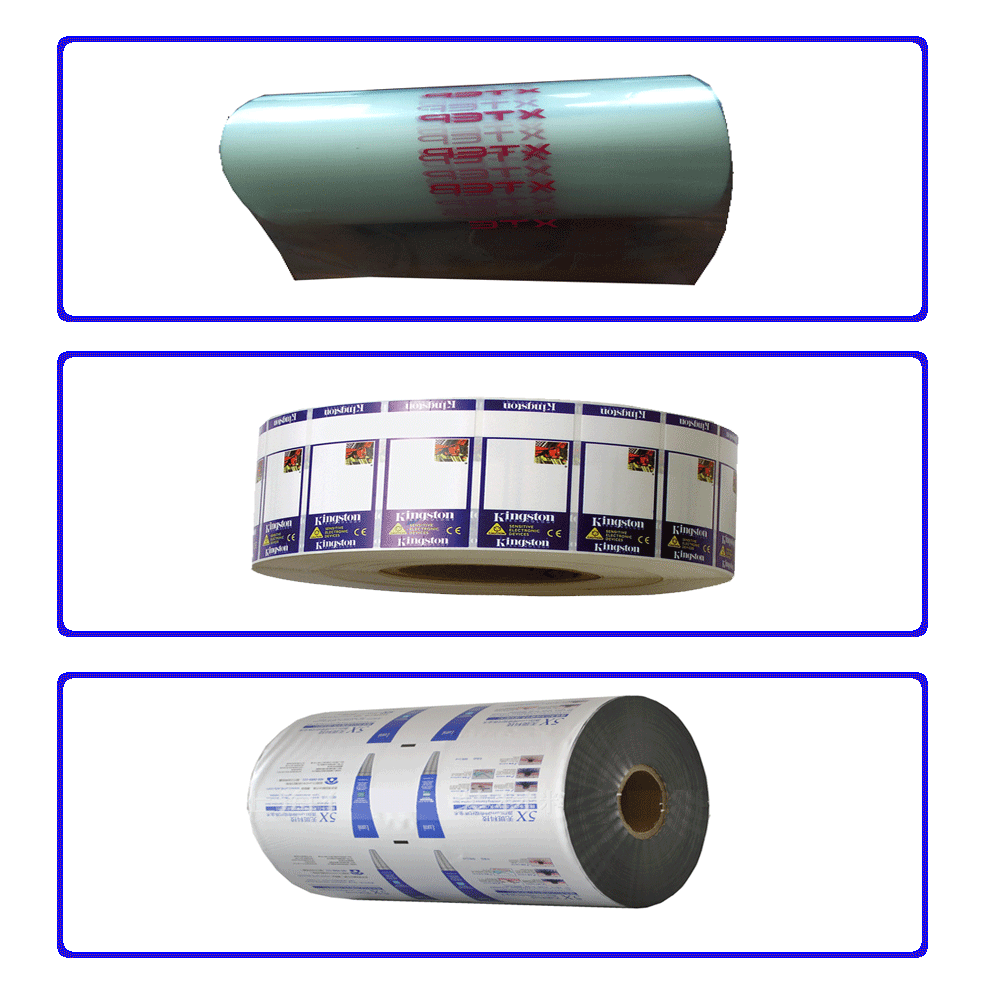
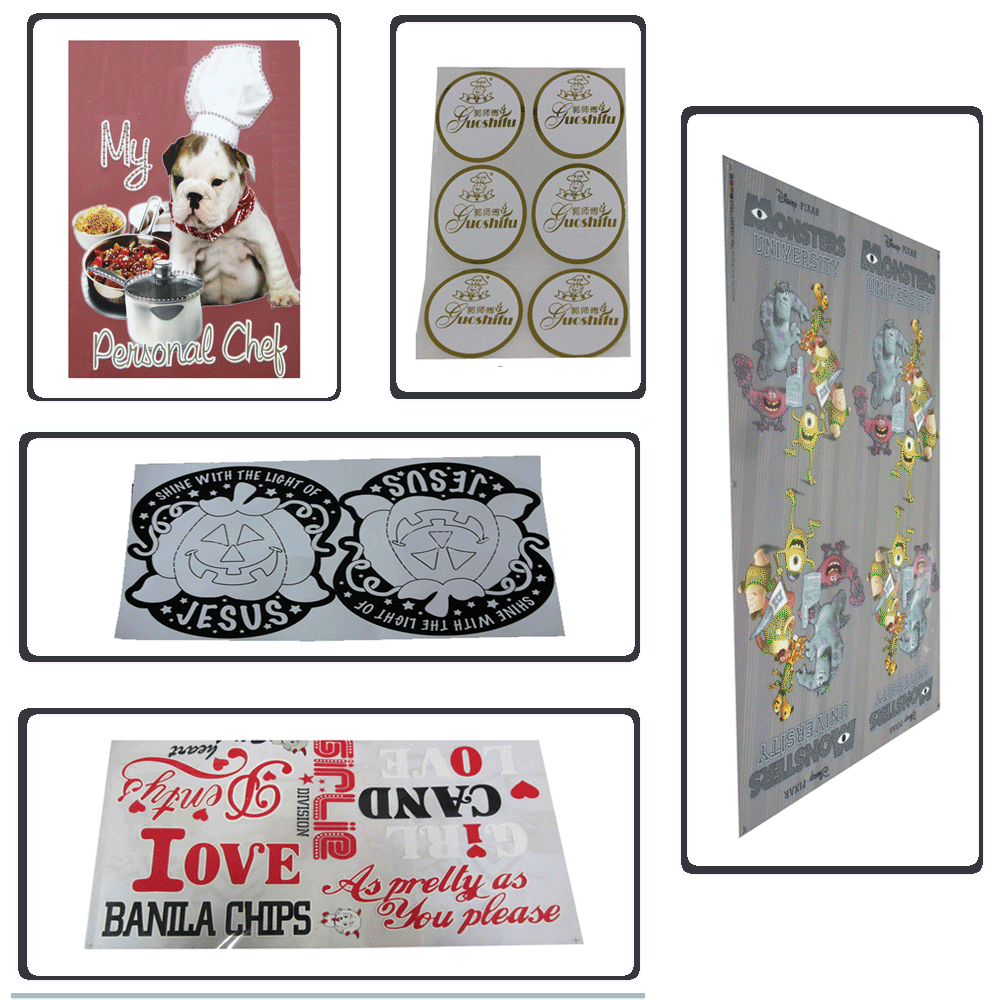


How to choose screen printing ink?



















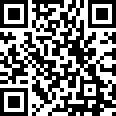 Mr. Kelven Bai
Mr. Kelven Bai